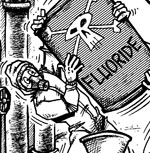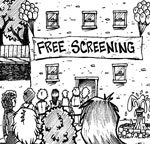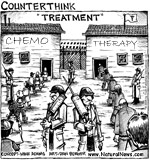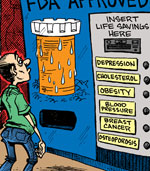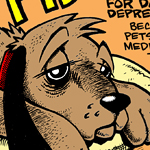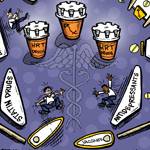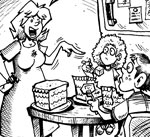Sporadic Fatal Insomnia - A Serious Kind of Insomnia You Are Very Unlikely to Get
| Share on Facebook | Share on Twitter | Share on Google+ |
Sporadic familial insomnia is a devastating neurological condition that invariably leads over just a few months to severe disability and death. Fortunately, sporadic fatal insomnia is an extremely rare condition. Just because you have some of the symptoms of this disease, you do not necessarily have sporadic fatal insomnia.
What Is Sporadic Fatal Insomnia?
Scientists believe that sporadic fatal insomnia is a mutation a single gene for a single protein is miscoded to form a prion. A disease with same symptoms, fatal familial insomnia, involves a mutation in a gene called PrP. This gene makes one of the proteins that help the body regulate the use of copper. The proteins made in sporadic fatal insomnia are the same as those made in familial fatal insomnia, but researchers have not been able to track down the exact source of the condition.
Changes in the production causes changes in the way the neurons in the brain are stimulated by calcium. Eventually, neurons are stimulated all the time and "burn out."
Sporadic fatal insomnia is very rare. Only eight people in the entire world have had this disease. It cannot be diagnosed by magnetic resonance imaging (MRI) or electroencephalography (EEG). A definitive diagnosis is only possible after death through autopsy.
What Is the Course of Sporadic Fatal Insomnia?
Sporadic fatal insomnia, as you might imagine, causes insomnia several years. After two to three years, there is usually a problem with gait (the ability to walk normally) and double vision followed by slurred speech and short-term memory loss. At this point, the progress of the disease accelerates.
Most of the people who have suffered sporadic fatal insomnia have lived about six months after diagnosis of the disease. Paralysis and insomnia that is made worse by sleeping pills quickly lead to death.
Treatments for Sporadic Fatal Insomnia
There is no cure or treatment for sporadic fatal insomnia. There are no treatments that slow down the course of the disease. Fortunately, only about one in a billion people develops this disease.
Selected References:
Hegde RS, Rane NS. Prion protein trafficking and the development of neurodegenerationz. Trends Neurosci. 2003;26:337-339.
Hetz C, Soto C. Protein misfolding and disease: the case of prion disorders. Cell Mol Life Sci.2003;60:133-143
-
Skin CareMen Skin Care
-
Free ResourcesFree eBooks
-
Every human being is the author of his own health or disease.Buddha
-
Featured Health Supplement
 If you find a product that is as effective as Total Balance, and is better value for money, let us know and we will give you a refund equivalent to your entire purchases of Total Balance…retrospective.
If you find a product that is as effective as Total Balance, and is better value for money, let us know and we will give you a refund equivalent to your entire purchases of Total Balance…retrospective.
-




